How to Make a Mini Tesla Coil 9v
POWER
How to Make a Mini Tesla Coil 9v
Be it an ordinary high school project or a mind blowing arcing project, a Tesla Coil is always fun to build and will definitely make your project look cool and attractive. A Tesla Coil is a simple coil that creates a high voltage electric field in the air when a small input power (9V) is provided, this electric filed is strong enough to glow small light bulbs. This principle was invented by the Nicola Tesla, who also holds the credit for inventing Induction Motors, AC current, neon bulbs, Remote controls etc..
This Mini Tesla Coil Circuit is very simple and just works with a help of 9V battery and very few commonly available electronic components, which makes it is very easy to build (fingers crossed). There are a handful number of people who have tried this project already and have failed to obtain the result; this is mainly because of few subtle mistakes that commonly occur. So it does not matter if you have already given up on Tesla coils or if you are completely new to this topic, this tutorial will be your final stop to build and debug your Tesla coil and get it working. In this DIY Tutorial we will learn How to make a Simple Tesla Coil with 9v Battery and transmit the power wirelessly.
Warning: This is a high voltage project, so make sure you always know what you are doing. The voltage is not lethal but still can cause nerve and tissue damage if you get in direct contact with any arcs. You don’t have to fear much, but always remember not to touch the coil while its powered ON.
Materials Required:
- Magnetic wire a.k.a Enamelled copper wire
- 22K Resistor
- 2N2222 Transistor
- LED
- Ordinary breadboard wire
- Any non conductive cylindrical object
- 9V Battery (or 5V Supply)
- Breadboard
Working of a Tesla coil:
Before we start building the Tesla coil, it is very important to know how it works. Only then we will be able to build and debug one successfully. The Tesla coil works with the principle of Electromagnetic Induction. According to which, when a conductor is placed under a varying magnetic field, a small current will be induced inside the conductor. For a Tesla coil this conductor will be called as the secondary coil and the varying magnetic field will be produced by the primary coil by passing an oscillating current through the primary coil.
It might sound a bit confused, but let us proceed with the circuit diagram where things will be made much clear.
Circuit Diagram:
The circuit diagram of Mini Tesla Coil Project given below is very simple. So let us understand how it works and learn how to build it. The main component in this circuit is the secondary coil (golden colour), which is made by winding a magnetic wire (enamelled) around a cylindrical object (any non conductive object will work).
A high current high frequency transistor like 2N2222 is used to supply current through the primary coil (violet colour). The whole set up is powered by a 9V battery as shown above. The positive end of the battery reaches the collector of Transistor through the primary coil, and the emitter is grounded. This means that whenever the transistor conducts, current is flown through the primary coil. The LED diode and one end of the secondary coil is also connected to base of transistor to make the circuit oscillate, this way the transistor will send a oscillating current into primary coil. If you want get more technical and learn how the current oscillates you can Google for “Slayer Exciter Circuit”.
So, with this arrangement we have a primary coil which will have an oscillating current, and hence will produce a carrying magnetic flux around it. Now, this coil is wound around the secondary coil and hence a according to law of electromagnetic induction a voltage will be induced in the secondary coil. Since the number of turns in the secondary coil is very large than primary coil, this voltage will be a very high voltage and hence this coil will have a very strong electric flux around it that is powerful enough to glow normal CFL bulbs and is used in Wireless Power Transmission.
Winding the Secondary Coil:
One very important step in this project is winding the secondary coil. It is a time consuming process and hence do not rush yourself in this part. First of all, you will need a magnetic coil, which is also called as enamelled coil wire. These wires can be found inside relays coils, transformers and even motors. You can either reuse one or buy yourself a new one. The thinner the wire is the better the results will be.
Once you are ready with the magnetic wire, you will need a cylindrical object. The only rule while selecting this object is that it should not be conductive, you can select PVC pipes, cardboard roll or even stack 4-5 A4 sheets together and roll them up. The diameter of the cylinder can be anywhere between 5cm to 10cm, and the length should be at least 10cm. The longer the object is more number of turns it can fit in.
After getting your coil and cylindrical object, it is time to start the winding process, just wind few turn and use a tape to secure the winding initially and then proceed with the complete winding. Make sure you follow the below tips while winding
- Wind the coils as close as possible
- Do not overlap one coil turn over another
- Try to get a minimum of 150 turns, a value of 300 turns will be typically good.
Common Misconceptions:
Once we are ready with the coil we are almost 90% through the project after that just follow the circuit diagram and make the connections, but there are few commonly asked questions to which you can find the answers below.
- Do not use a normal transistor in place of 2N2222, unless you know to select an exact equivalent for this transistor.
- The resistor 22K need not be exactly the same it can be anywhere from 12K to 30K.
- Make sure the 9V battery that you are using is brand new, because the cheap batteries will not last more than 5 minutes with this circuit, If you have an Arduino or something which can source you +5V you can also use that.
- It is completely fine for your coil to have any number of turns, but it should have a minimum of at least 150 turns, you dint have to be very accurate with the count.
- The circuit can work from 5V to 10V. However don’t push more than 500mA through it
- The LED has a different purpose other than glowing, it is actually used to switch the transistor so do not ignore it, a RED colour LED will work fine.
- Your LED might or might not glow when the Circuit is powered, you do not have to be worried about it.
- You might or might not get a spark (arc) at the free end of Secondary coil, you do not have to worry about that either. If you get an Arc do not touch it.
- Always check if the circuit is working only by using a normal CFL bulb.
- Adding a metal load (foil paper) on top of secondary coil is optional, but it sure will improve the results but not mandatory to get a basic working output.
- There is a very little chance for you to hear any hissing sound, so don’t expect it.
Working of 9V Mini Tesla Coil:
Just follow the steps to wind the coil and use a breadboard to make the connection as shown in the circuit diagram. Once you are done with everything your mini tesla coil project will look something like this.
I dint not have a 22K resistor or anything near, so I used two 47K resistors in parallel as shown in the circuit. Now, finally it is time to have fun. Just power the circuit using a new 9V battery and bring a CFL bulb close to the coil you should be able to watch the CFL bulb glow without any connection on its own just like as shown in the video below. You can also achieve the same effect on tube lights as well. Go ahead and play around with it, there is a lot more room to improve the project, by increasing the current rating or by increasing the number of turns on secondary coil to get arcs on the free end of secondary coil. But, all those things are left for a new tutorial.
You can also check if the circuit is working by using a mulimeter, just place the multimeter in voltage mode. Touch the black probe on the ground of the circuit and leave the red probe floating on the air, the multimeter should be able to read a very high voltage as shown below where the meter reads a very high voltage of 1247V. You have been warned already, be very careful around these high voltage set-up. Learn here How to use a Digital Multimeter.
You can also check the presence of Flux by using a Clamp Type Multimeter in NCV mode. When you bring the Multimeter near to the coil, it will start beeping with the flashig light.
But, wait!!!...., what if your bulb does not glow. Don’t worry it should be a very subtle problem somewhere. A most common solution to try out first is change the polarity of your primary coil, that is connect the collector end of primary coil to battery positive and the battery positive end of primary coil to the collector pin. This should help you to solve the problem. If not, try using a new 9V battery or some other reliable power source.
Even then if you face any problem make sure you have read the common misconception heading above and check for your circuit connection. If everything fails feel free to post your problem as comment below. I will try my best to make your circuit work.
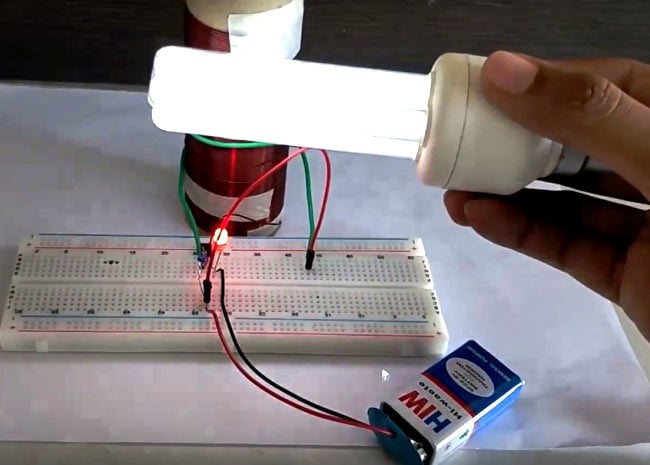
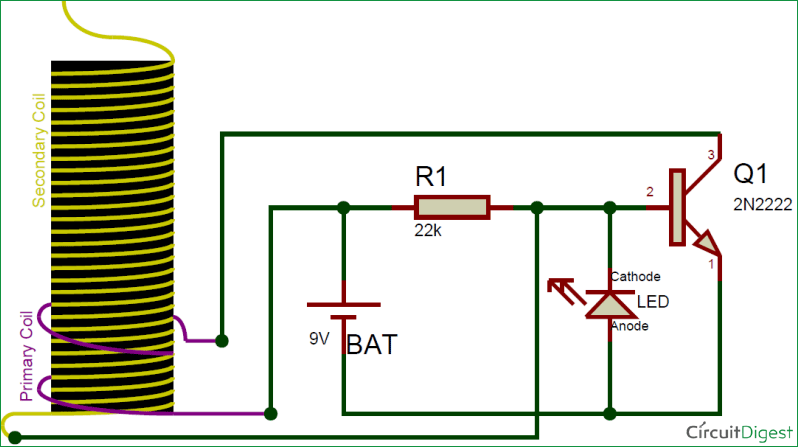
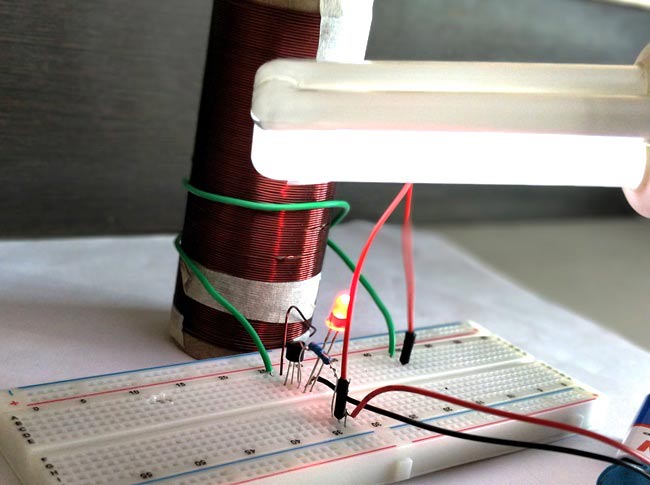
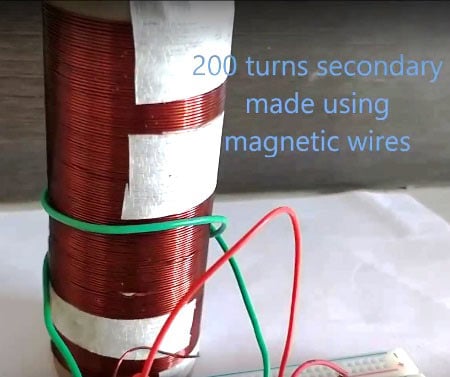
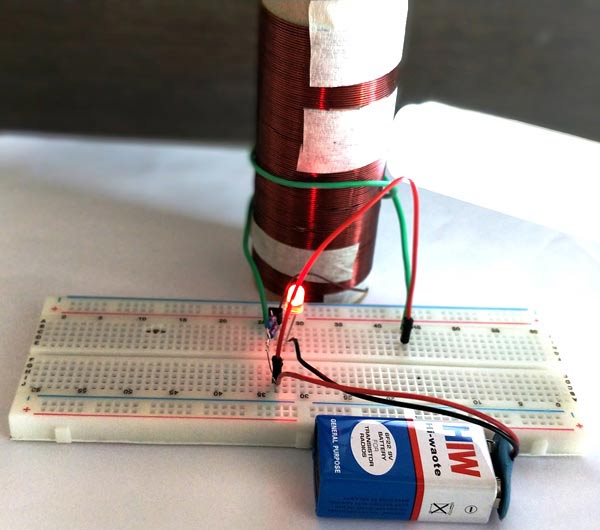

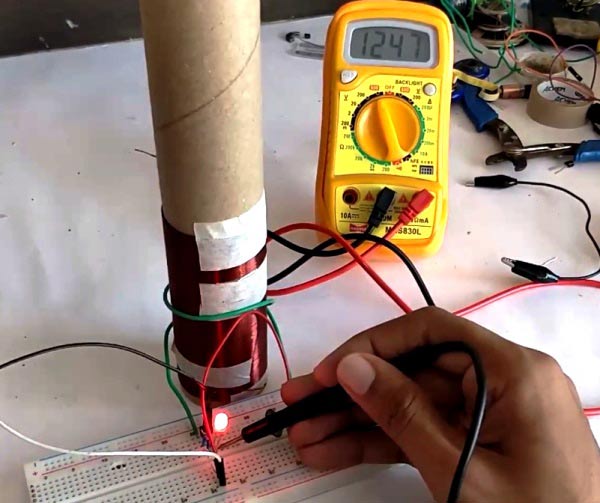
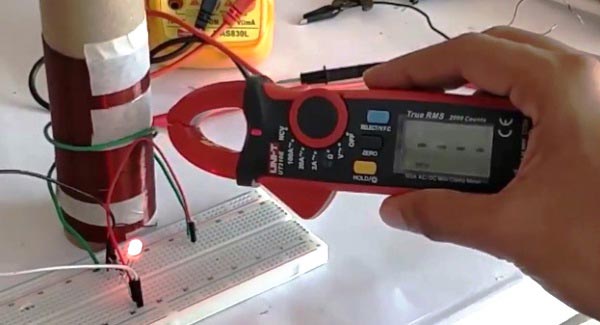
Comments
Post a Comment